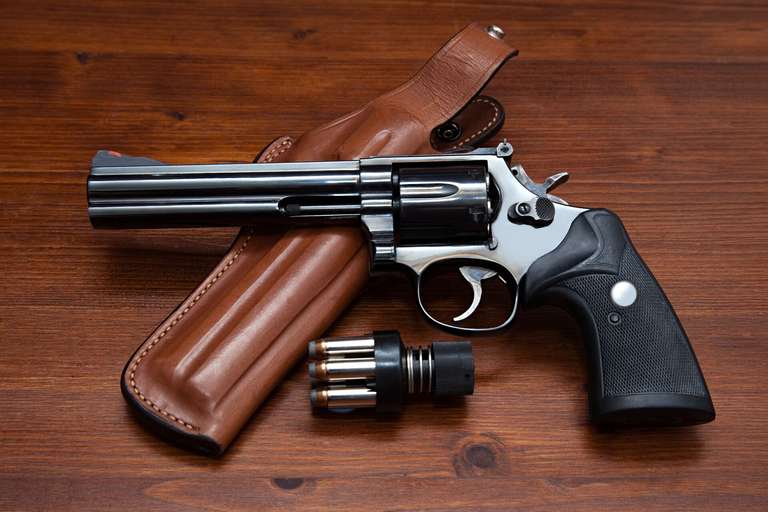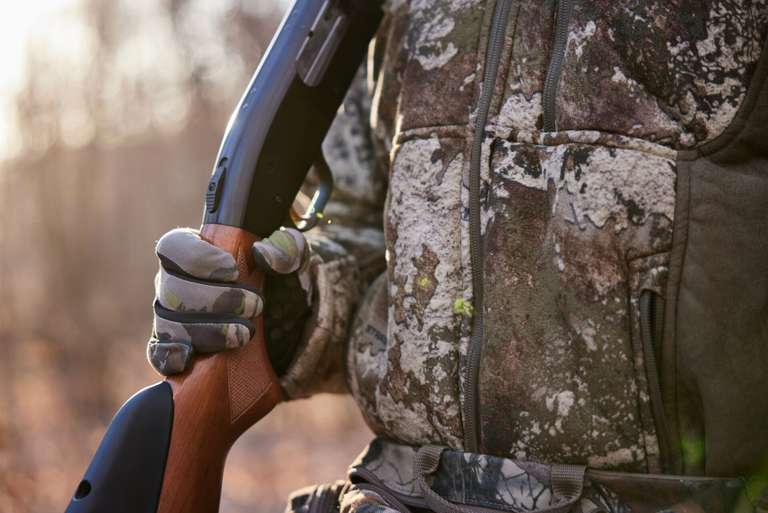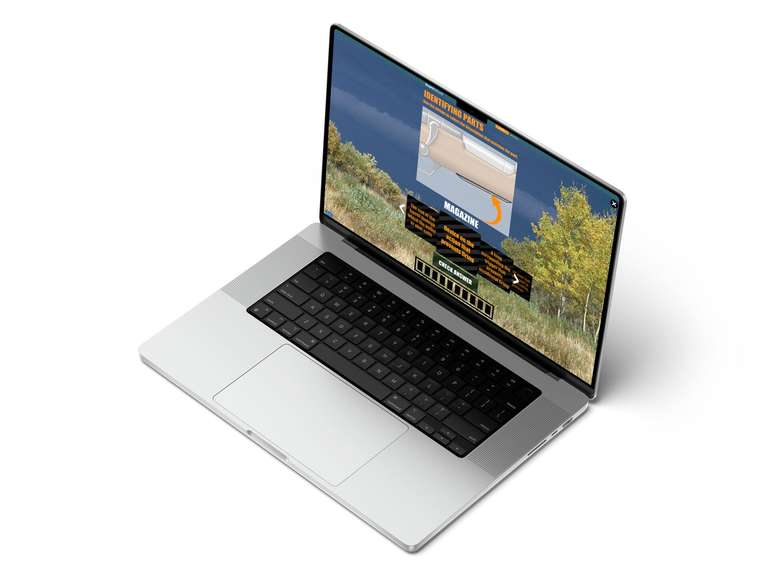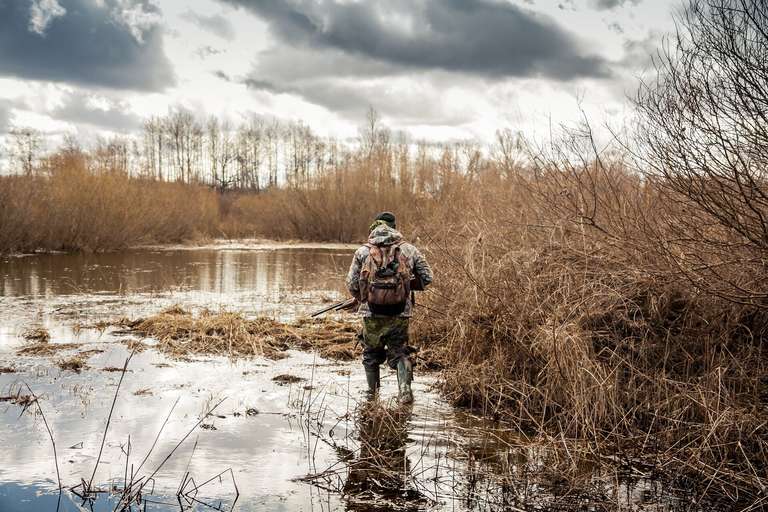Shotgun Know-How: Using The Sights On Shotgun Firearms
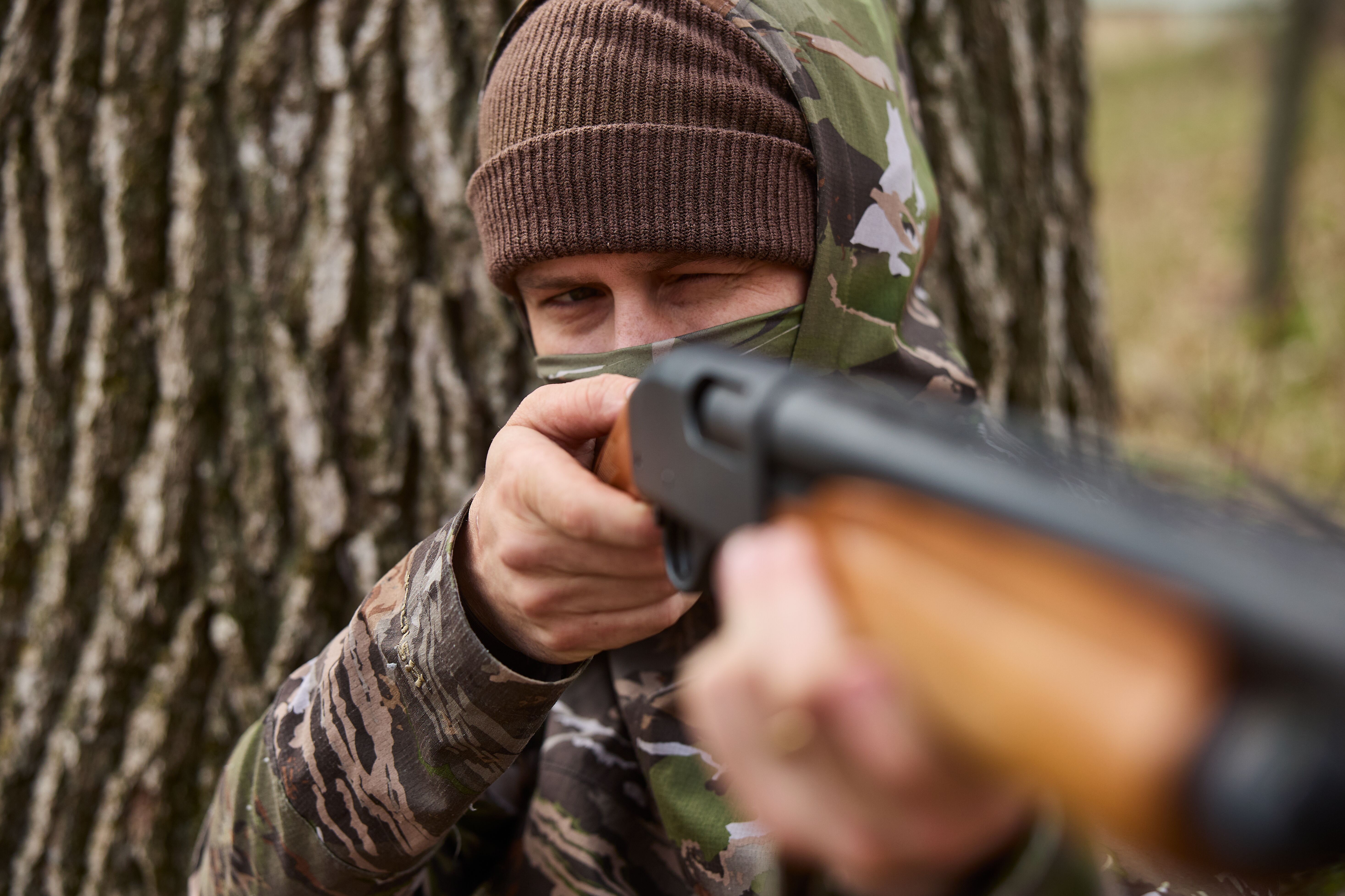
Whether you're a wing shooter or whitetail hunter, mastering your shotgun's sights is critical to a successful and safe hunt.
From the time-tested traditional bead sights to today's advanced electronic optics, knowing the pros and cons of each sighting system can dramatically improve your effectiveness in the field.
Here's what you need to know about using the sights on shotgun firearms!
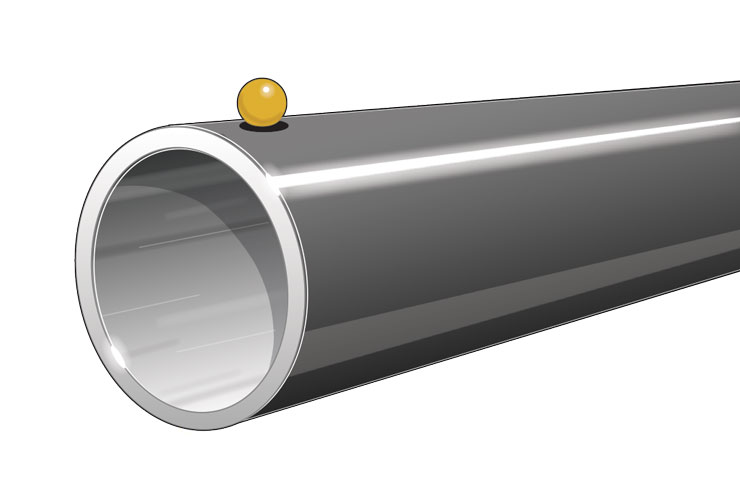
Understanding Shotgun Sights
There are several types of shotgun sights, each with advantages and preferred hunting scenarios.
Bead Sight
A bead sight is the most common shotgun sight. It consists of a small metal or plastic bead mounted on top of the end of the barrel.
Bead sights provide a quick reference point for aiming and allow for rapid target acquisition. They are optimal for fast-moving targets in upland and waterfowl hunting.
Iron Sights
With a notch mounted on the shotgun's receiver and a front post just behind the muzzle, iron sights offer more accuracy for aimed shots. Aligning the rear sight and the front post on the target provides a more precise aiming point when hunting with slugs or buckshot.
Fiber-Optic Sights
Fiber-optic sights gather sunlight and funnel it to the fiber's front post endpoints. This creates a brighter light than the surrounding light, making it an ideal sight option for low-light shooting.
Electronic Sights
Electronic sights rely on a battery to project a red dot or holographic image on a coated, slightly angled piece of glass mounted on the receiver. These sights increase accuracy at close to medium ranges and are optimal in low-light scenarios.
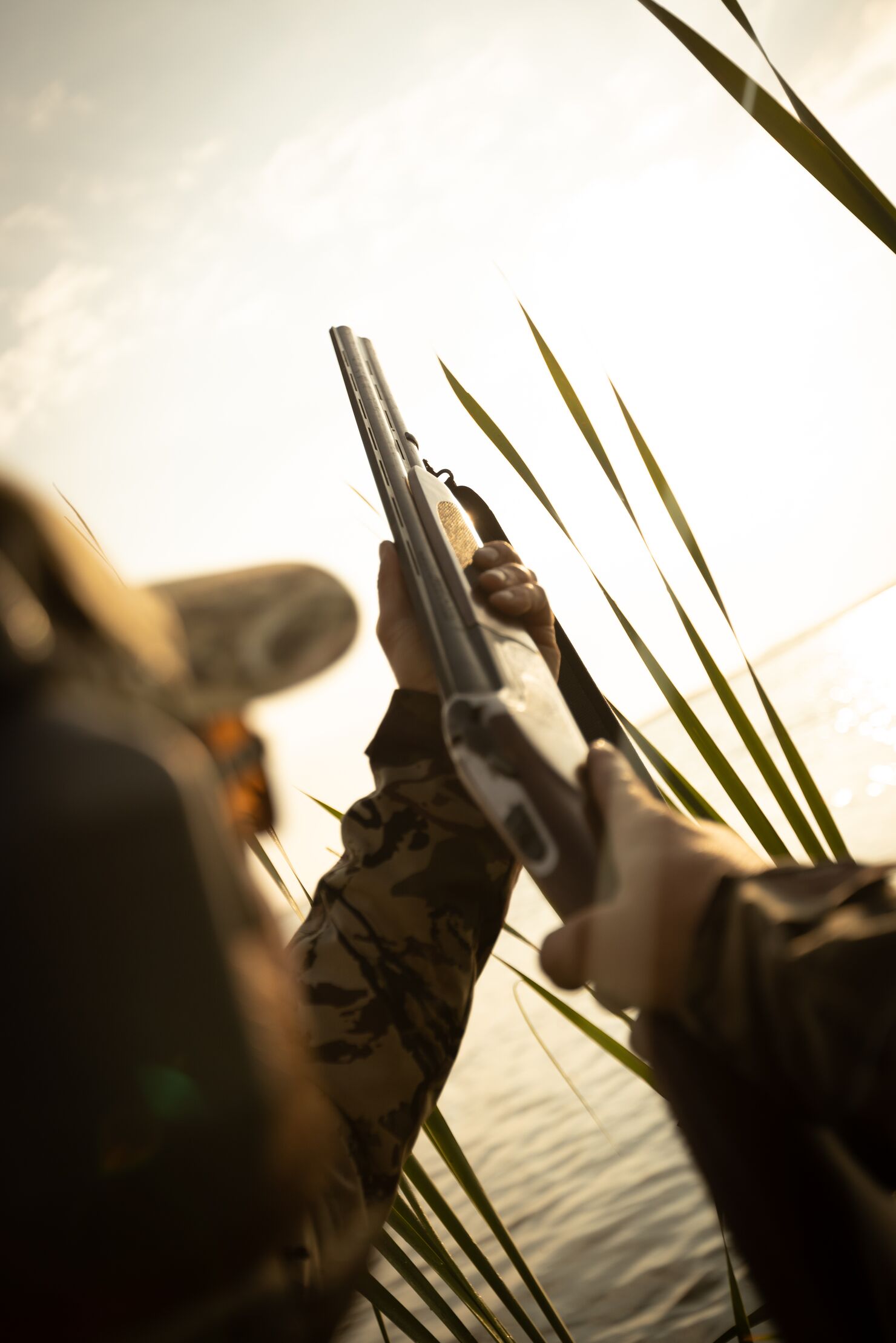
The Importance of Proper Alignment
No matter which shotgun sighting system you use, proper sight alignment is critical to hitting your target and reducing the risk of shooting in an unsafe direction.
With bead, fiber-optic, and electronic sights, focus on the target while keeping the bead or dot in your peripheral vision. This lets you quickly "point and shoot" at fast-moving, close-range targets.
When using an iron sight, center the front post in the rear notch, with the tops level with each other. Keep your focus on the front sight to increase accuracy for stationary or longer-distance targets.
Sighting Practice Tips
Dry fire practice at home is the best and cost-free way to improve your sighting skills and develop proper muscle memory.
Using an unloaded shotgun, practice:
- Mounting the shotgun to your shoulder in one smooth motion
- Pointing at the target for wing shooting or aiming iron sights with proper front and rear sight alignment
- Pressing the trigger without causing the sight to move
Wear the clothes you'll be using on your hunt to identify any issues restricting your movement or preventing the shotgun from correctly mounting on your shoulder and upper chest.
Sighting In Your Shotgun
Before practicing or heading out for a hunt, always sight in your shotgun to verify your point of aim aligns with the point of impact.
Here's an easy five-step process:
- Use the same ammunition and choke you'll be using during the hunt.
- Place a target at a known distance, typically 25-40 yards.
- Fire three rounds, aiming at the same point on the target each time.
- Note where the shots are grouped on the target.
- Follow the manufacturer's instructions to adjust your sight's windage and elevation based on the average of your grouping. Since you cannot move a bead sight, you must change your point of aim to compensate.
Then, repeat steps 2-5 until your point of aim is the same as your point of impact.
Go through the sighting process with each type of choke and ammunition you'll use during the hunting season.
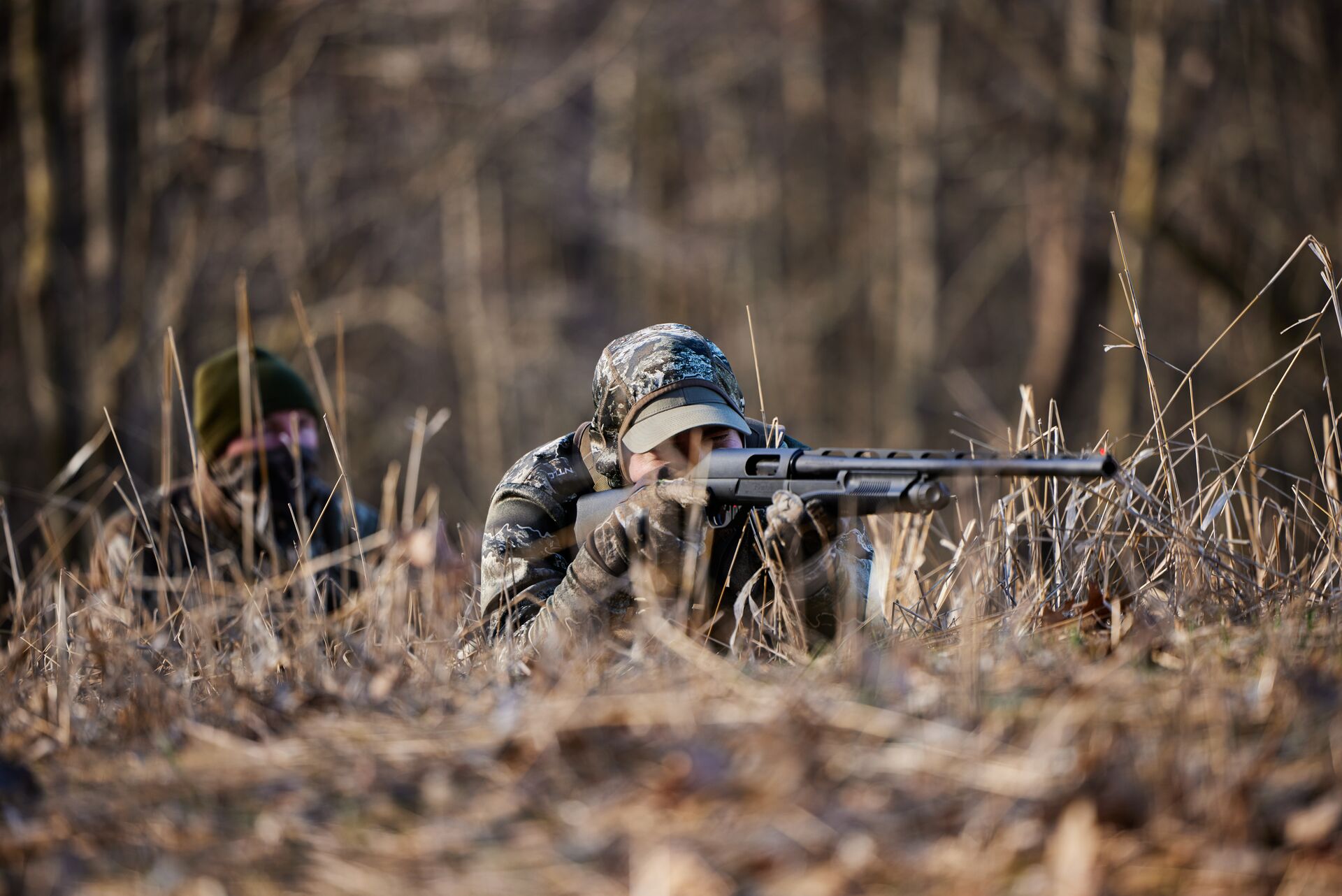
Adjusting Your Sights
Electric and iron sights on shotguns can be adjusted to correct for windage (left-right) and elevation (up-down).
- Windage Adjustments: Move the rear sight in the direction you want your shots to be. To shift your point of impact to the right, move the rear sight to the right. To shift your point of impact to the left, move your rear sight to the left.
- Elevation Adjustments: Remember the phrase "raise to raise, lower to lower." Raising the rear sight will raise the point of impact while lowering it will lower it.
You may need to adjust your sights when using different ammunition and shooting at various distances.
"Hold off" is adjusting your aim above or below your target to compensate for projectile drop at distances outside your sight-in range. This allows for quick elevation adjustments without changing your sights.
For example, with a 40-yard zero, you might have to aim one inch high at 50 yards or two inches low at 20 yards.
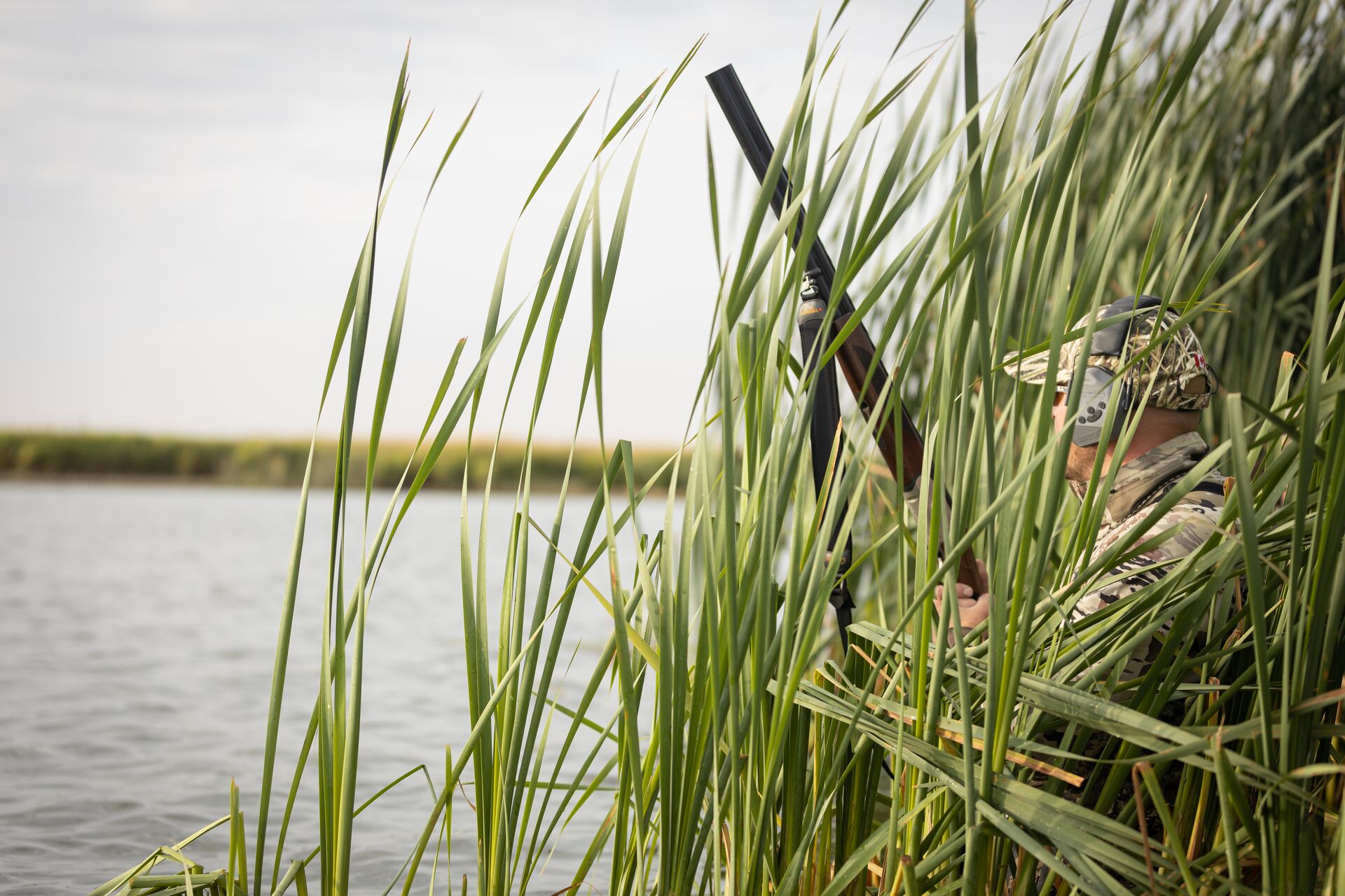
Using Sights on Shotgun Firearms in Different Hunting Scenarios
Upland bird hunting requires quick target acquisition when a bird flushes. Bead or fiber-optic sights are preferred for these fast-paced hunts.
When a bird flushes, you don't have time to aim. Point the sight at the bird, focusing on the target. Let your instincts guide the shot. This method is called "point shooting."
Waterfowl hunting often takes place shortly after dawn or just before sunset. These low-light conditions are perfect for fiber-optic or red dot sights. Since ducks fly fast and the shots are at longer distances, you'll need to use your sight to shoot ahead of — or lead — the bird. Use your sight as a reference point to develop your lead based on the bird's speed, distance, and elevation.
Big game hunting requires precision for ethical and effective shots, especially when using slugs. Experienced hunters prefer using iron or electronic sights to achieve the required accuracy.
Focus on proper sight alignment and sight picture and take a more deliberate approach to aiming to achieve the best shot placement.
Maintaining Your Sights
Regularly maintaining your sights on shotgun firearms will ensure they remain functional and accurate during hunting season.
Keep your sights clean by wiping them down with a soft cloth to remove debris, moisture, or carbon deposits after every session. Use a camera lens brush or air duster to clean the glass on red dot and holographic sights gently.
Before you take your shotgun to the field, check that all sights are securely mounted to it and no screws or mounting hardware is loose.
When transporting your shotgun, place it in a padded soft case or hard case to avoid damaging your sights or knocking them out of alignment.
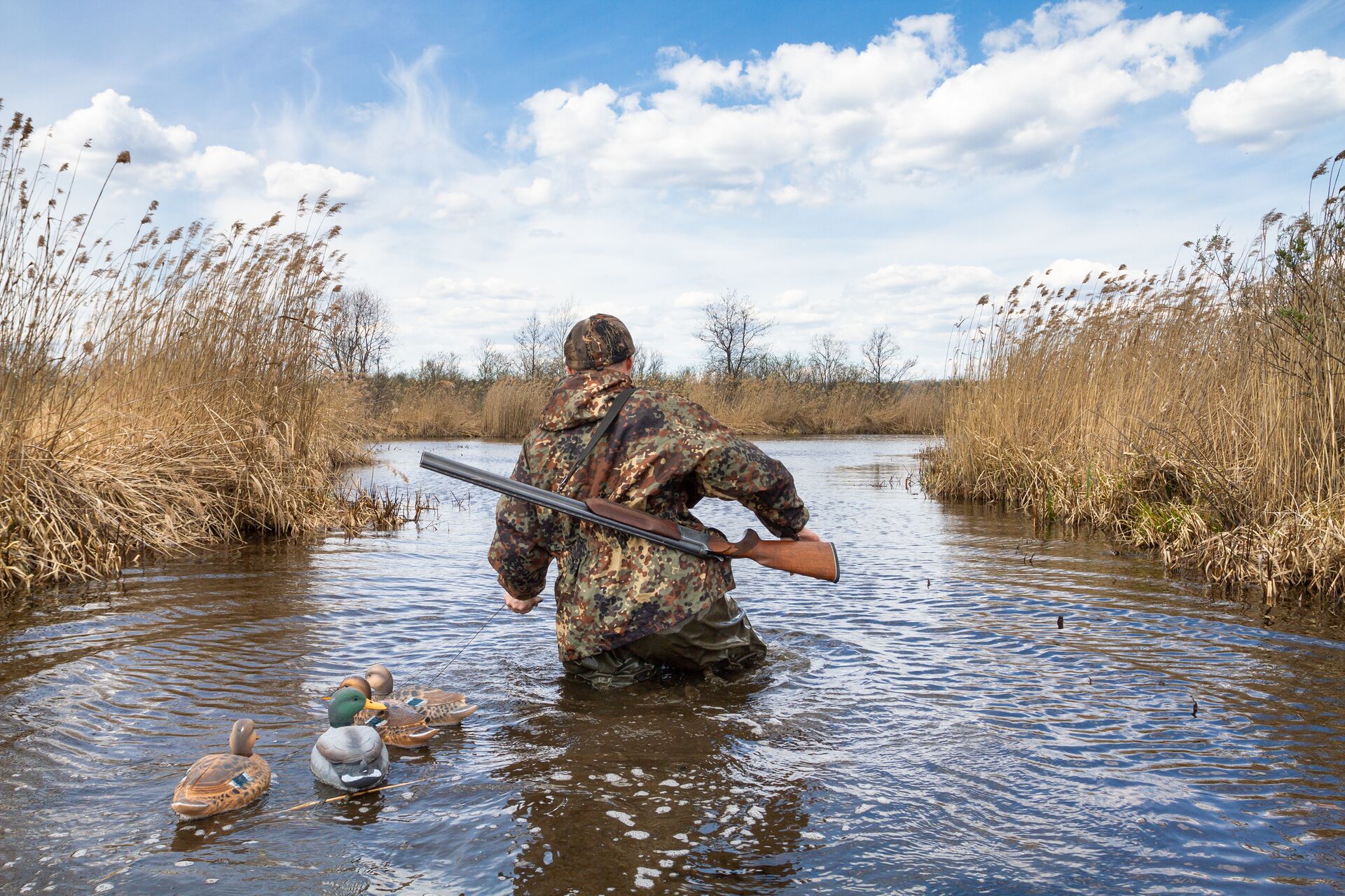
Common Mistakes (and How to Avoid Them)
Don't get discouraged if you're having trouble using your sights. Here are some common issues and how to correct them.
Focusing on the Wrong Object
When using a bead or electronic sight, your focus needs to be on the target, not the sight.
This is contrary to how most sights are used and can take some time to get used to.
When using iron sights with a rear sight and a front post, the front post should be in sharp focus and your target slightly blurred. Use dry practice to train your eye to focus on what it needs for your specific sighting system.
Inconsistent Eye Relief
If your focus is correct, but you're still getting inconsistent shot placement, the likely culprit is eye relief (the distance between your eye and the sight).
Irregular placement of the stock in your shoulder pocket and your cheek weld will change the eye relief every time you mount the shotgun, inducing sight alignment errors. To avoid these inconsistencies, develop a consistent mounting position through dry practice.
Over-Adjusting Sights
Adjusting your shotgun's sights requires a methodical approach and patience.
There is always a temptation to make sight adjustments based on insufficient data from a single shot or wide-spread group. However, this will lead to chasing the point of impact all over the target.
Instead, make sight adjustments based on the average of multiple three-shot groups. Adjust in small increments, shooting more three-shot groups to verify your changes.
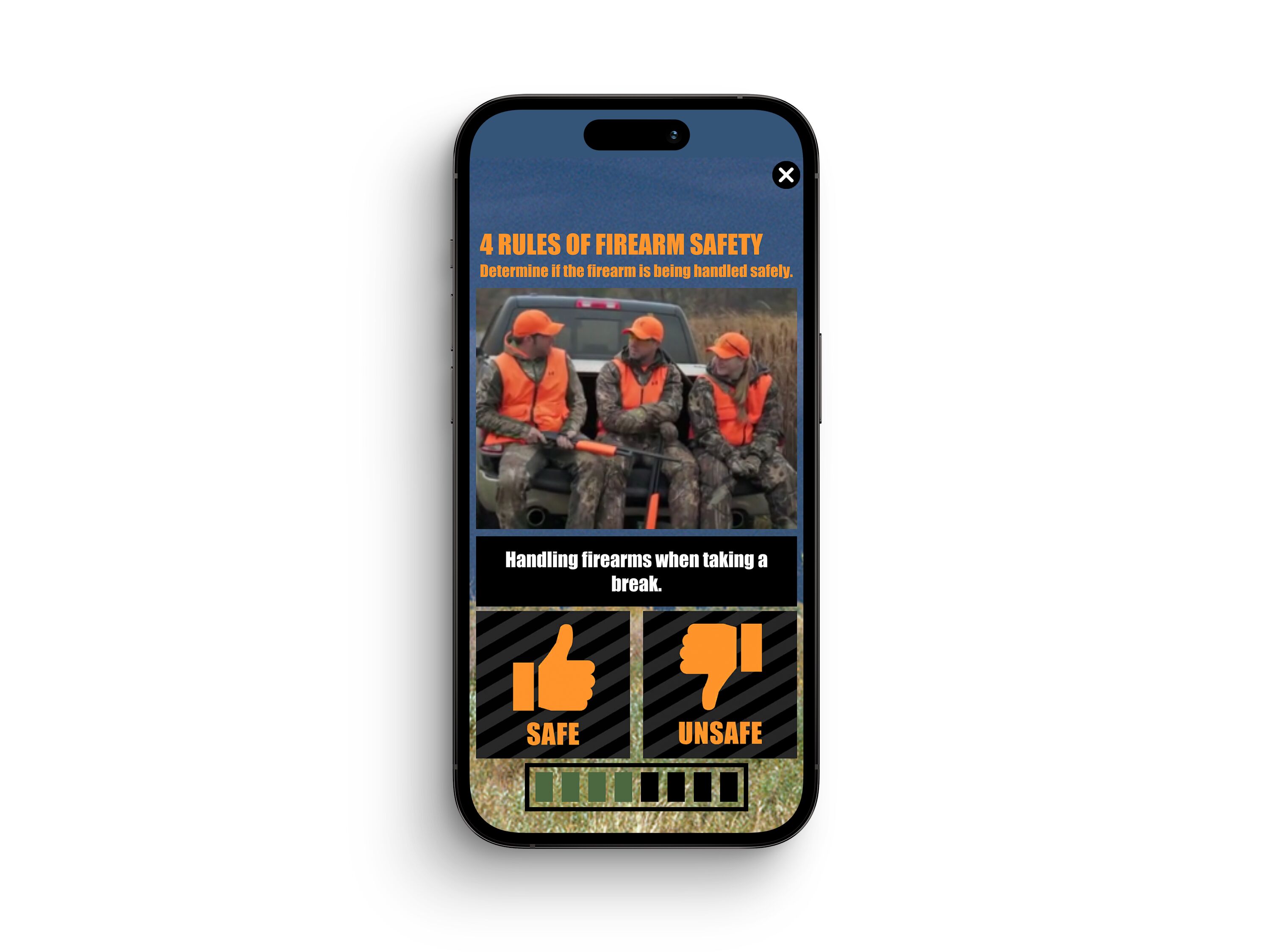
Practice With Shotgun Sights and Stay Safe in the Field
Understanding and correctly using your sights on shotgun firearms is an indispensable skill for every upland, waterfowl, and big game hunter. Mastering your shotgun's sighting system and knowing how to use it with various ammunition at varying distances will increase your confidence and effectiveness in the field.
Practice the tips we've shared today to improve your shooting accuracy. We recommend a hunter education course through ilearntohunt to keep your skills sharp and improve your safety knowledge before your next hunt. Our gamified online courses offer valuable lessons on firearms safety, weapons handling skills, conservation practices, and more.
Plus, in most states, hunters must pass a hunter education course before getting a hunting license. Let us help! Choose the course for your state, start learning, and happy hunting!



